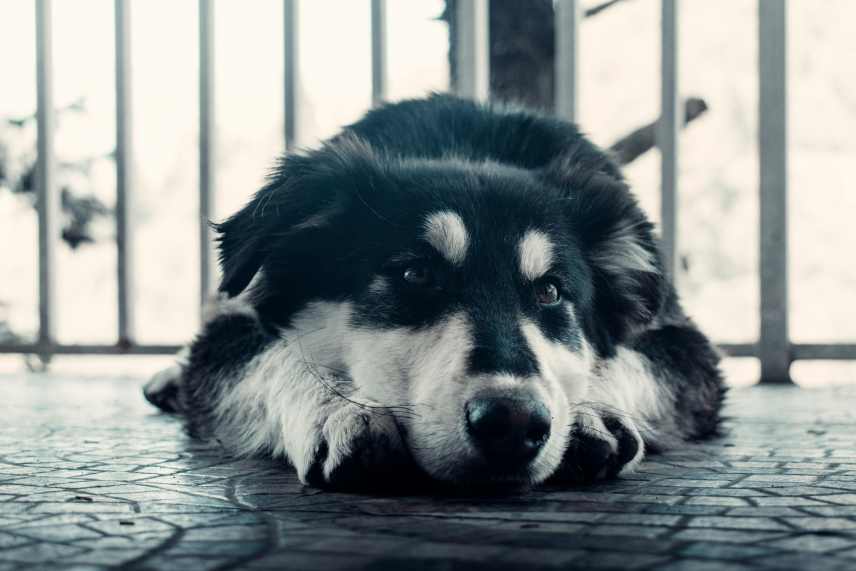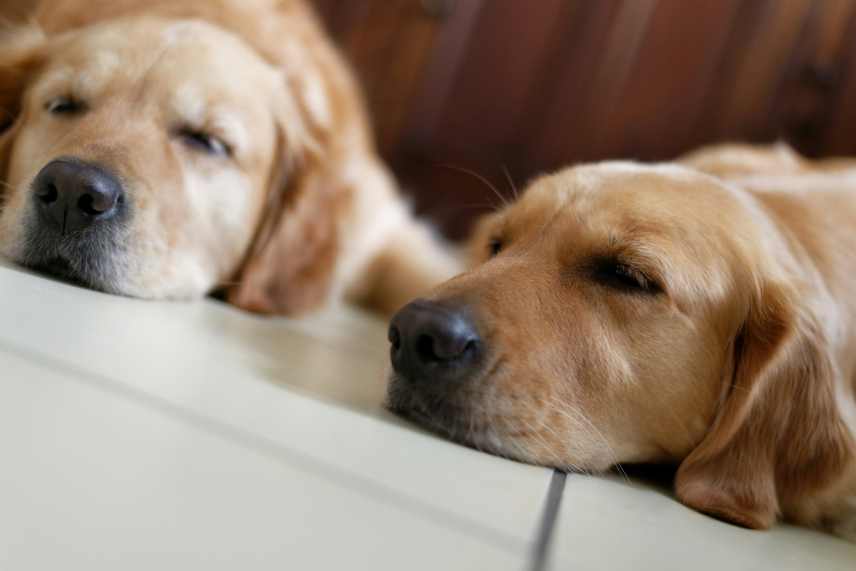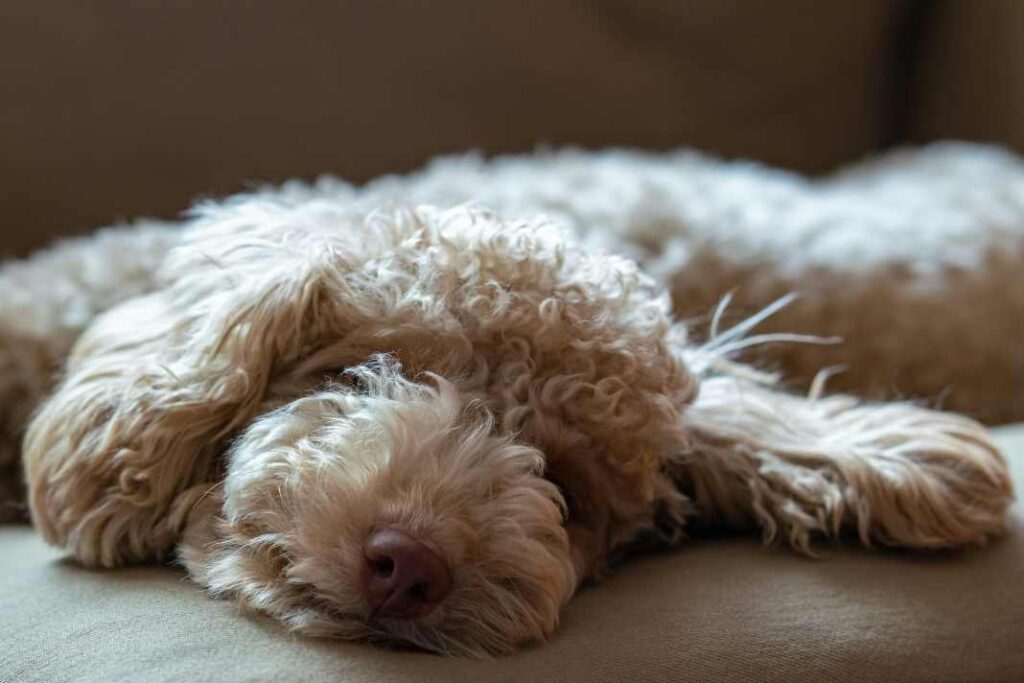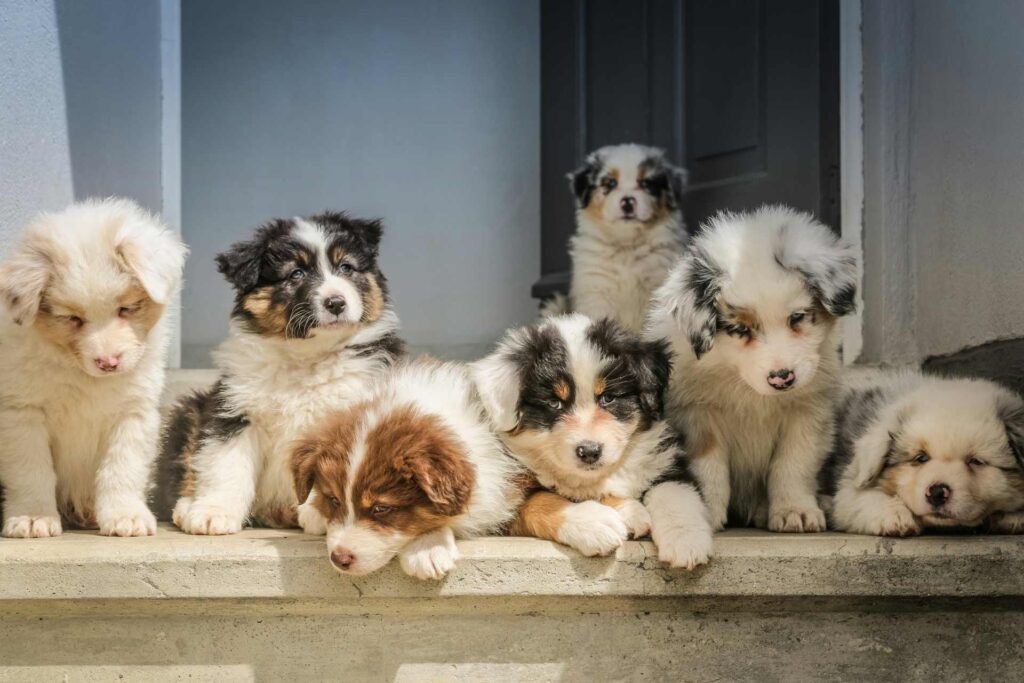Learn how to ease your dogs separation anxiety with practical tips, training techniques, and professional help – a guide to easing dog separation anxiety.
I conclude this article with a preview and links to:
- Natural Remedies for Calming Dogs and Improving Sleep
- How to Deal with Separation Anxiety in Dogs
- Unlocking the Benefits of Early Socialization
Introduction to Separation Anxiety in Dogs
Separation anxiety in dogs is a distressing condition, not just for the pets experiencing it but also for their human companions. This disorder arises when a dog forms an intense bond with their owners or other household animals and subsequently faces extreme stress in their absence.
The range of symptoms associated with separation anxiety is broad, encompassing behaviors such as trembling, salivating, excessive barking or howling, over grooming, and even more destructive actions like chewing furniture or urinating indoors.
These signs indicate not just a dog’s displeasure at being left alone but a profound feeling of panic and distress.
Separation anxiety in dogs arises from intense bonds and manifests as distress when alone, involving various symptoms.
The roots of separation anxiety in dogs can be diverse, tracing back to both environmental and psychological factors. Changes in a dog’s daily routine, such as a shift in the owner’s work schedule or moving to a new home, can trigger anxiety.
Similarly, traumatic experiences, including prolonged periods of isolation or abandonment, can leave lasting marks on a dog’s psyche, predisposing them to separation anxiety.
Moreover, early life experiences play a crucial role; puppies that were not adequately socialized or were separated from their litter mates and mother too early often exhibit signs of this condition.
Understanding these contributing factors is essential for addressing and managing separation anxiety effectively, ensuring dogs can lead happy, stress-free lives even in their owner’s absence.
Understanding the Causes of Dog Separation Anxiety
Understanding why dogs develop separation anxiety is crucial in addressing and mitigating its effects effectively. Several factors contribute to the likelihood of a dog experiencing separation anxiety. For instance, dogs that have been rescued from animal shelters or found as strays are often more susceptible to separation anxiety.
This increased vulnerability can be attributed to their previous experiences of abandonment or lack of a stable home environment, which may have left them with a deep-seated fear of being left alone again.
Furthermore, dogs living in environments devoid of constant social interaction, such as apartments or homes without children or other pets, may also be at higher risk. The absence of a diverse social network can lead to feelings of isolation and loneliness when their human companions are away, thereby heightening their anxiety levels.
Dogs develop separation anxiety from factors like past abandonment, lack of social interaction, and deep owner attachment.
Another significant factor is the nature of the dog’s attachment to its owner. Dogs that exhibit excessively clingy or dependent behavior towards their owners are particularly prone to separation anxiety.
This over-attachment can manifest as a dog becoming visibly distressed even during brief separations, indicating a profound reliance on their owner’s presence for emotional security.
Additionally, certain life changes such as moving to a new home, changes in the owner’s schedule, or even the loss of a family member can exacerbate or trigger separation anxiety in dogs.
These changes disrupt their routine and sense of security, making them more anxious and stressed when left alone. Understanding these causes is the first step towards creating a tailored approach to help alleviate the distress experienced by dogs suffering from separation anxiety.

Signs Your Dog May Have Separation Anxiety
Identifying separation anxiety in dogs can be a nuanced process, as symptoms can range widely in expression and severity. Common indicators include visible distress behaviors such as trembling or salivating, alongside more disruptive actions like destructive chewing, howling, or engaging in urination and defecation in the home.
These behaviors typically manifest shortly after the dog’s primary caregiver leaves and can persist regardless of the length of absence, be it a few minutes or several hours. A particularly illustrative example of this condition is when a dog, otherwise well-behaved and house-trained, begins to destroy furniture or have accidents indoors exclusively during periods when they are left alone.
Identifying dog separation anxiety involves observing distress signs like trembling, salivating, destructive chewing, and inappropriate elimination.
Addressing and even recognizing these signs can be further complicated by the fact that many dogs with separation anxiety cleverly mask their distress in the presence of their owners.
This behavioral shift means that half of the dogs suffering from separation-related behaviors may not show any overt signs while their owner is present, presenting a significant challenge in diagnosing and subsequently treating the condition.
This discrepancy underscores the importance of observing changes in behavior patterns and seeking professional advice if separation anxiety is suspected, ensuring the well-being and mental health of the affected dog.
Practical Tips to Help Dogs with Separation Anxiety
Creating a safe and comfortable space for your dog is one of the most effective steps you can take to ease their separation anxiety. This dedicated area should be a tranquil part of your home where your dog feels secure and at ease.
Consider including their favorite bed, a selection of toys for mental stimulation, and even an article of your clothing that carries your scent. This personal touch can have a calming effect on your dog, making them feel closer to you even when you’re away.
Additionally, playing soothing music or leaving the TV on a low volume can provide a comforting auditory presence, reducing the stark silence that might otherwise heighten their anxiety.
Ease dog separation anxiety by creating a safe space with their bed, toys, and your scent, using positive reinforcement training.
Incorporating positive reinforcement training into your daily routine can significantly bolster your dog’s confidence and independence. This method focuses on rewarding your dog for calm and desired behaviors rather than punishing negative ones.
For instance, you might treat your dog when they settle quietly in their bed as you prepare to leave, reinforcing the idea that being alone is a positive experience. Such training not only helps in managing separation anxiety but also in fostering a stronger bond between you and your pet.
Remember, the goal is to gradually build your dog’s comfort with being alone, ensuring that your departures are not a source of stress but a normal part of their day they can handle with confidence.

Training Techniques to Ease Separation Anxiety in Dogs
Implementing a consistent routine can significantly alleviate the stress associated with separation anxiety in dogs. Begin by acclimating your dog to short periods of separation, gradually extending the time you’re away.
This method helps your dog learn that you will return, making your absences less anxiety-inducing over time. For example, initially stepping out for a few minutes and then slowly increasing the duration to hours can help build your dog’s tolerance to being alone.
It’s also beneficial to adopt a calm and nonchalant demeanor during departures and arrivals to avoid heightening your dog’s anxiety.
Alleviate dog separation anxiety with a consistent routine, gradually increasing alone time, calm behavior, exercise, and possibly calming supplements.
In addition to establishing a routine, incorporating physical exercise and mental stimulation into your dog’s daily schedule can play a pivotal role in managing separation anxiety.
A tired dog is generally more relaxed and less prone to stress when left alone. Consider long walks, engaging puzzle toys, or the assistance of a dog walker to ensure your dog remains active and mentally engaged.
For dogs with severe anxiety, consulting with a veterinarian about calming supplements or prescription medications can offer additional support, helping to soothe their nerves and make your absence more bearable.

Seeking Professional Help for Dog Separation Anxiety
When the signs of separation anxiety in your dog don’t improve with initial interventions, it becomes vital to seek professional help. Consulting a veterinarian is the first step to rule out any underlying medical issues that could be contributing to your dog’s anxious behavior.
A vet can also guide you towards the use of calming supplements or medications that might help ease your dog’s anxiety. For a more comprehensive approach, involving a clinical animal behaviorist can be extremely beneficial.
These professionals can assess your dog’s behavior in a holistic manner and develop a customized treatment plan that addresses the root causes of anxiety, ensuring a more effective and long-lasting solution.
For unresolved dog separation anxiety, consult a veterinarian, consider calming supplements, and seek a behaviorist for a tailored treatment plan.
It’s important to understand that using incorrect methods to address separation anxiety, such as the ‘cry it out’ technique, can have detrimental effects on your dog’s mental health.
This approach can exacerbate the stress and anxiety your dog is already feeling, potentially leading to more severe behavioral issues. Instead, professional guidance will likely involve a combination of behavior modification techniques, environmental changes, and, in some cases, medication.
This process is not quick—it requires dedication, patience, and consistency from the dog owner. You may need to work closely with the professionals for several months to see significant improvements, but the effort is worthwhile to ensure your dog’s happiness and well-being.
Additional Support and Considerations for Dogs with Separation Anxiety
The pandemic has led to a significant increase in dogs developing separation anxiety due to extended periods of constant companionship with their owners. Dogs that have never experienced being alone before, especially “pandemic puppies,” are particularly susceptible.
Addressing separation anxiety early on, taking small steps in training, and considering the dog’s overall environment and daily routine can help mitigate these issues.
Furthermore, changes in household circumstances, such as moving or the loss of a family member, can trigger or exacerbate separation anxiety in dogs.
Pandemic increases dog separation anxiety; early training, environment consideration, and adapting strategies are crucial for improvement.
Separation anxiety in dogs is a complex condition that requires understanding, patience, and often a multifaceted approach to treatment.
By recognizing the signs early and implementing strategies to help your dog cope with anxiety, you can improve their quality of life and strengthen your bond.
Remember, every dog is unique, and what works for one may not work for another. Continuously adapting and seeking professional guidance when needed can lead you and your dog towards a happier, anxiety-free life together.
Calming Canines: Natural Remedies for Calming Dogs and Improving Sleep

Discover the best natural remedies for calming dogs and improving their sleep, including the benefits of chamomile, lavender essential oil, and CBD oil.
Continue reading: Natural Remedies for Calming Dogs and Improving Sleep
How to Deal with Separation Anxiety in Dogs

In this article we talk about how to deal with separation anxiety in dogs using positive reinforcement training techniques, behavioral modifications, and the use of toys and tools to alleviate symptoms, as well as explore treatment options and long-term management strategies before considering rehoming as a last resort option.
Continue reading here: How to Deal with Separation Anxiety in Dogs
Unlocking the Benefits of Early Socialization

Puppy socialization classes play a vital role in shaping a dog’s behavior and well-being by offering a structured environment for young puppies to interact positively with other dogs and people.
These classes serve as an essential platform for puppies to learn appropriate social skills, such as greeting others calmly and engaging in play without fear or aggression. Puppies not adequately socialized can experience separation anxiety.
Learn more about puppy socialization here: Unlocking the Benefits of Early Socialization




